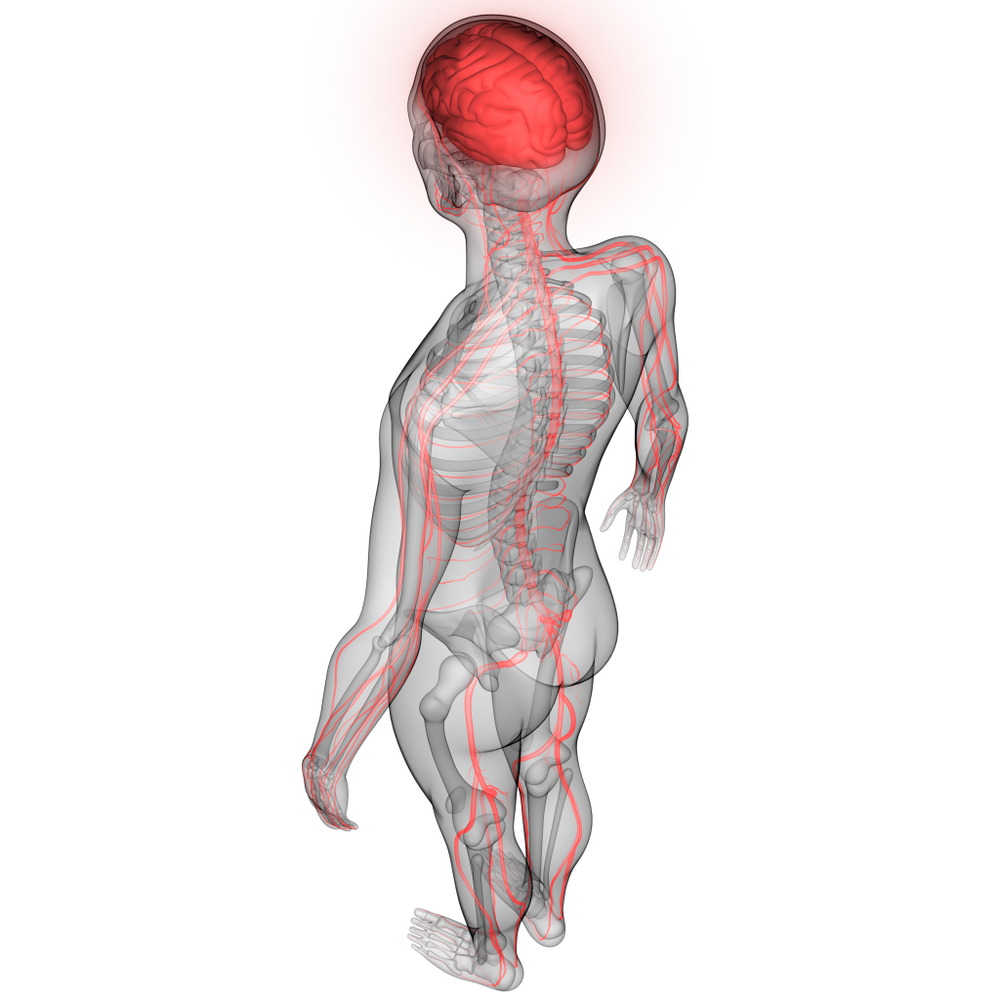The brain and the rest of the nervous system make up the control centre for the human body. The central nervous system is made up of the brain and the spinal cord. All actions, both voluntary and involuntary, occur due to electrical and chemical signals being passed between the brain and the nervous system, the musculoskeletal system and the sensory organs.
The nervous system carries out a complex array of tasks including the control of body movements, operation of internal organs, perception of various smells and production of speech. Intelligence, creativity, emotion and memory are a few of the many functions governed by the brain.
The Brain
The human brain is the most complex of any living creature on earth. The average adult brain weighs one and a half kilograms and is one of the largest organs in the human body. The size of the brain can differ greatly from person to person, although this is not an indicator of intelligence.
The brain is composed of the cerebrum, cerebellum and brain stem. The cerebrum is divided into two hemispheres, the right and left hemisphere. Each hemisphere has four lobes, the frontal lobe, parietal lobe, occipital lobe and temporal lobe. Each lobe has specific functions.
The Spinal Cord
The spinal cord is approximately forty two to forty five centimetres long and has a diameter of approximately two centimetres. It extends from the medulla oblongata in the brain stem, to the lumbar spine region and is protected by the spinal column which is made up of vertebra.
The brain and spinal cord are surrounded by cerebrospinal fluid, a clear, colourless fluid that cushions and protects these important structures from injury. Along the route of the spinal cord, nerves branch out to the entire body. These nerves make up the peripheral nervous system.
The spinal cords three major functions are to relay messages from the brain to different parts of the body to perform an action; to pass along messages from sensory receptors to the brain; and to coordinate reflexes that are managed by the spinal cord alone.
Injuries
Conditions affecting the central nervous system include spinal cord injury, traumatic brain injury, as well as stroke, brain cancer and congenital conditions such as spina bifida. The common aspect of these injuries and conditions, is the debilitation that typically results which is often severe and chronic. This is because the central nervous system has a limited capacity to repair itself after an injury.

